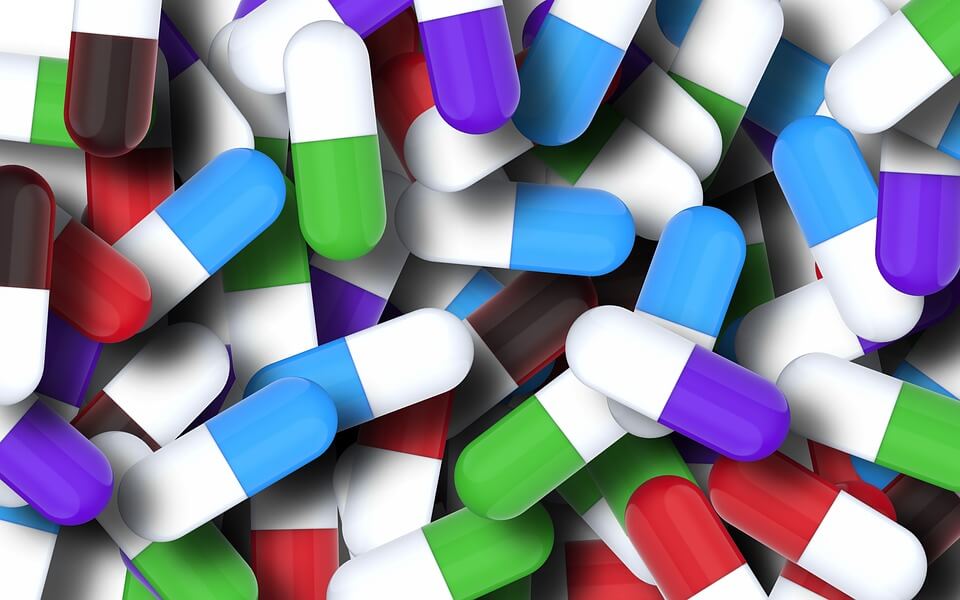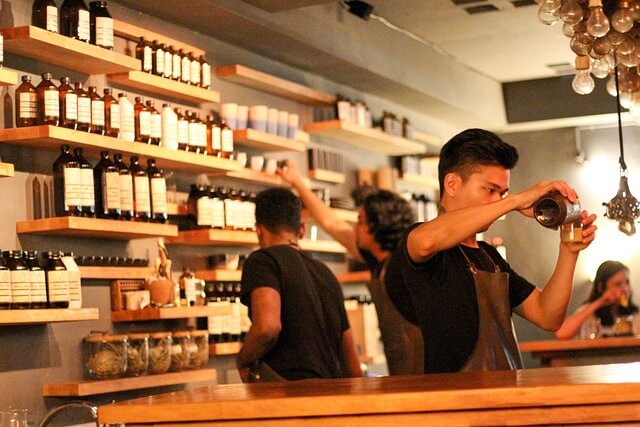
In the past few years, South Asia – the most populous and most densely populated geographical region in the world has witnessed a phenomenal rise in the production, trafficking, and consumption of synthetic or designer drugs, performance-enhancing steroids, and psychoactive bath salts (PABS) being prepared in clandestine laboratories. The region has emerged as a base for the illicit manufacture and trafficking of new psychoactive substances (NPS), Amphetamine-Type Substances (ATS), and other synthetic drugs, largely because of the easy availability of precursor chemicals.
The global illicit drug industry is estimated to be worth anywhere between US$ 100 – 1,000 billion a year. The clandestine or shell companies involved in the trade are not listed on any stock exchange. This makes it all the more difficult to regulate or estimate the exact size of the illicit drug trafficking industry which continues to be the most lucrative business for criminals worldwide.
The illicit drugs can be divided into three categories: firstly, plant-based drugs like poppy, opium, morphine, cocaine, cannabis, or heroin; secondly, synthetically produced illicit drugs, such as amphetamine; and thirdly, psychoactive pharmaceutical drugs.
The introduction and circulation of synthetic drugs significantly transformed the existing drug market, which earlier used to revolve around plant-based psychoactive substances such as heroin, opium, and cannabis. According to the International Narcotics Control Board (INCB), there has been an increase in the abuse and trafficking of prescription drugs and over-the-counter pharmaceutical preparations containing narcotic drugs in South Asia.
As things stand today, a large number of synthetic versions of cannabis, and heroin are being openly sold by local pharmacies as prescription medicine and legal replacement for illicit drugs.

For instance Fentanyl, a powerful synthetic opioid primarily manufactured in China is being offered as a substitute for heroin. Fentanyl which is usually prescribed as pain medicine is 50 times more powerful than heroin. Due to the increase in demand, the price of precursor chemicals used for illegally manufacturing Fentanyl has spiraled upwards in the past few years in China which happens to be the number one supplier of fentanyl to the United States, Canada, and Mexico.
Another synthetic opioid called Tramadol – is classified and prescribed as a pain medication. Tramadol is cheap, widely available, and extensively abused. But this does not dilute the fact that intake of Tramadol can lead to stroke or sudden death due to life-threatening breathing problems.
Likewise, Mephedrone, also known as M-CAT, White Magic, or Meow meow comes in the form of tablets or crystals and can be swallowed, snorted, or injected. The use of mephedrone can lead to euphoria, stimulation, improved mental function, and mild sexual stimulation like cocaine, amphetamines, and MDMA. Some users say that it produces a better and longer-lasting high and is less addictive than cocaine.
Mephedrone is classified as a “plant food,” to avoid being controlled by the Medicines Act in the UK. Likewise, mephedrone, as well as methylone and methylenedioxypyrovalerone (MDPV), are marketed in the USA as bath salt, plant food, powdered jewelry cleaner, and other such products duly marked “not for human consumption” to hoodwink the federal drug prohibition laws.
Similarly, synthetic cannabinoids or synthetic marijuana also known as K2, Spice, Black Mamba, Bombay Blue, Genie, Zohai, Banana Cream Nuke, Krypton, and Lava Red are marketed as herbal incense, or herbal smoking blends “not for human consumption”. Synthetic cannabinoids are increasingly being sold in the form of e-cigarettes to quit smoking tobacco, but in reality, they have been found to be more addictive than marijuana.
Another common example of a designer drug is MDMA also called Ecstasy or Molly (slang for “molecular”), which is a synthetic drug that alters the mood and produces feelings of increased energy, pleasure, emotional warmth, and distorted sensory and time perception. A high dose of MDMA can lead to a spike in body temperature as well as liver, kidney, or heart failure — even death.

Likewise, Methamphetamine a white, bitter-tasting powder or pill is a highly addictive and extremely dangerous drug. It can be easily produced in small clandestine laboratories, using a combination of relatively inexpensive over-the-counter ingredients like ephedrine or pseudoephedrine (a common cold medication) as well as acetone (nail polish remover), anhydrous ammonia (fertilizer), ether (volatile starting fluid for diesel engines), red phosphorus, and lithium as well as some drain cleaners, paint thinners, and hydrochloric or sulphuric acid. These chemicals found in meth are both hazardous and toxic, still it is used by people who wish to continuously stay awake and with less need for sleep.
According to intelligence reports, synthetic drugs like ATS, Ecstasy, and Methamphetamine in crystalline, powdered, and tablet forms are mainly manufactured in Shan State in Myanmar. Myanmar and Cambodia are today among the leading players involved in illegally manufacturing methamphetamine and other chemicals used in the manufacture of synthetic drugs which seem to have overtaken the market for plant-based drugs, which used to dominate the narcotics market almost two decades ago. The price of methamphetamine produced in Myanmar is as low as USD 1.5 per gram in powdered form and USD 2.54 per tablet – the lowest price for synthetic drugs all over the globe.
According to Global Smart Update, a UNODC publication, synthetic drugs do not require a specific type of climate or land. Large volumes of illicit drugs can be manufactured overnight in the drug factories –as long as the precursor chemicals are available. This makes it all the more difficult for law enforcement agencies to prevent the manufacturing of psychoactive substances (NPS) or synthetic drugs.
New psychoactive substances (NPS) and amphetamine-type stimulants (ATS) are today some of the most abused synthetic drugs after cannabis and opioids. According to the World Drug Report, synthetic drugs like amphetamine-type stimulants (ATS) are some of the most widely abused drugs worldwide — more than even heroin and/or cocaine.
Some of the other findings in the report included:
- Nearly 90 percent of cocaine seized globally in 2021 was trafficked in containers and/or by sea.
- Trafficking of methamphetamine continues to expand geographically, with 117 countries reporting seizures of methamphetamine in 2016‒2020.
- The quantities of methamphetamine seized grew five-fold between 2010 and 2020.
- Opium production worldwide grew seven percent predominantly due to an increase in production in Afghanistan. However, the global area under opium poppy cultivation fell by 16 percent to 246,800 ha in the same period.
South Asia is an increasingly popular destination for methamphetamine in tablet or crystalline form. A number of instances of methamphetamine smuggling have been reported in northeast India. About 154 kg of methamphetamine was reportedly seized in Nagaland in December 2021. Likewise, a shipment of 51,000 methamphetamine tablets, weighing about 5 kg rupees valued at rupees one crore was seized by the Assam Rifles in Mizoram, in June 2022.
In 2021, a bulk of the confiscated drugs were in the form of methamphetamine tablets called ‘Yaba’. According to sources, there has been an increase in the smuggling of Methamphetamine tablets (Yaba), and “World Is Yours” (WIY) a synthetic variant of the same—from across the India-Myanmar Border. Between May-December 2021, around 260,000 Methamphetamine tablets, around 16,000 bottles of cough syrup containing the precursor chemicals/synthetic substances as well as 13 kg of heroin and 265 kg of cannabis were confiscated in Assam.
This is largely because of the free movement agreement between India and Myanmar, which allows citizens of both countries to freely travel up to 16 km on either side of the border. This is something that is exploited by the insurgents and criminals who hire the poor and unemployed local youth to make a quick buck by transferring illegal consignments across the border.
Similarly, an increase in the smuggling of methamphetamine pills and codeine-based cough syrups has been observed across the Bangladesh and Bhutan border. In a number of cases, chemicals like ephedrine and pseudoephedrine were reportedly smuggled from India to clandestine laboratories in Myanmar and where it was processed and the illegally manufactured drugs were smuggled back to India for being shipped to other countries. In a number of cases, large quantities of ATS and methamphetamine tablets bound for the United States, New Zealand, and Australia were seized at the Mumbai and Chennai ports. This clearly shows that there is a market for synthetic drugs not only in South and Southeast Asia but also worldwide.

